
 |
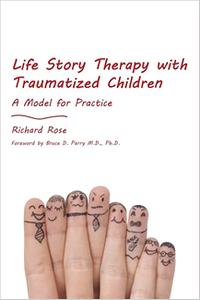 Richard Rose, "Life Story Therapy With Traumatized Children: A Model for Practice" English | 2012 | pages: 196 | ISBN: 1849052727 | PDF | 2,9 mb Life Story Therapy is an approach designed to enable children to explore, question and understand the past events of their lives. It aims to secure their future through strengthening attachment with their carers and providing the opportunity to develop a healthy sense of self and a feeling of wellbeing. This comprehensive overview lays out the theory underlying life story therapy, including an accessible explanation of contemporary research in neurobiology and trauma. Featuring tried and tested ideas, with tools and templates illustrated through instructive case studies, the author identifies how life story therapy can be implemented in practice. Finally, the relationships between life story therapy and traditional 'talking' therapies are explored. Life Story Therapy with Traumatized Children is essential reading for those working with children and adolescents, including social workers, teachers, child psychotherapists, residential care staff, long-term carers, psychologists and other professionals.
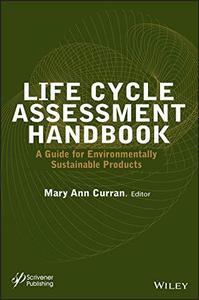 Life Cycle Assessment Handbook: A Guide for Environmentally Sustainable Products By 2012 | 616 Pages | ISBN: 1118099729 | PDF | 12 MB The first book of its kind, the LCA Handbook will become an invaluable resource for environmentally progressive manufacturers and suppliers, product and process designers, executives and managers, and government officials who want to learn about this essential component of environmental sustainability.Content: Chapter 1 Environmental Life Cycle Assessment: Background and Perspective (pages 1-14): Gjalt Huppes and Mary Ann CurranChapter 2 An Overview of the Life Cycle Assessment Method - Past, Present, and Future (pages 15-41): Reinout Heijungs and Jeroen B. GuineevChapter 3 Life Cycle Inventory Modeling in Practice (pages 43-66): Beverly SauerChapter 4 Life Cycle Impact Assessment (pages 67-103): Manuele Margni and Mary Ann CurranChapter 5 Sourcing Life Cycle Inventory Data (pages 105-141): Mary Ann CurranChapter 6 Software for Life Cycle Assessment (pages 143-157): Andreas CirothChapter 7 Modeling the Agri?Food Industry with Life Cycle Assessment (pages 159-183): Bruno Notarnicola, Giuseppe Tassielli and Pietro A. RenzulliChapter 8 Exergy Analysis and its Connection to Life Cycle Assessment (pages 185-215): Marc A. Rosen, Ibrahim Dincer and Ahmet OzbilenChapter 9 Accounting for Ecosystem Goods and Services in Life Cycle Assessment and Process Design (pages 217-231): Erin F. Landers, Robert A. Urban and Bhavik R. BakshiChapter 10 A Case Study of the Practice of Sustainable Supply Chain Management (pages 233-248): Annie Weisbrod and Larry LoftusChapter 11 Life Cycle Assessment and End of Life Materials Management (pages 249-266): Keith A. WeitzChapter 12 Application of LCA in Mining and Minerals Processing - Current Programs and Noticeable Gaps (pages 267-289): Dr. Mary Stewart, Dr. Peter Holt and Mr. Rob RouwetteChapter 13 Sustainable Preservative?Treated Forest Products, Their Life Cycle Environmental Impacts, and End of Life Management Opportunities: A Case Study (pages 291-310): Christopher A. BolinChapter 14 Buildings, Systems Thinking, and Life Cycle Assessment (pages 311-328): Joel Ann ToddChapter 15 Life Cycle Assessment in Product Innovation (pages 329-343): Nuno Da SilvaChapter 16 Life Cycle Assessment as a Tool in Food Waste Reduction and Packaging Optimization - Packaging Innovation and Optimization in a Life Cycle Perspective (pages 345-367): Ole Jorgen Hanssen, Hanne Meiler, Erik Svanes and Vibeke SchakendaChapter 17 Integration of LCA and Life?Cycle Thinking within the Themes of Sustainable Chemistry & Engineering (pages 369-389): Shawn Hunter, Richard Helling and Dawn ShiangChapter 18 How to Approach the Assessment? (pages 391-412): Jose Potting, Shabbir Gheewala, Sebastien Bonnet and Joost van BuurenChapter 19 Integration of MCDA Tools in Valuation of Comparative Life Cycle Assessment (pages 413-431): Valentina Prado, Kristin Rogers and Thomas P. SeagerChapter 20 Social Life Cycle Assessment: A Technique Providing a New Wealth of Information to Inform Sustainability?Related Decision Making (pages 433-451): Catherine Benoit NorrisChapter 21 Life Cycle Sustainability Analysis (pages 453-474): Alessandra Zamagni, Jeroen Guinee, Reinout Heijungs and Paolo MasoniChapter 22 Environmental Product Claims and Life Cycle Assessment (pages 475-543): Martha J. Stevenson and Wesley W. IngwersenChapter 23 Building Capacity for Life Cycle Assessment in Developing Countries (pages 545-561): Prof. Toolseeram RamjeawonChapter 24 Environmental Accountability: A New Paradigm for World Trade is Emerging (pages 563-584): Ann K. NgoChapter 25 Life Cycle Knowledge Informs Greener Products (pages 585-596): James Fava 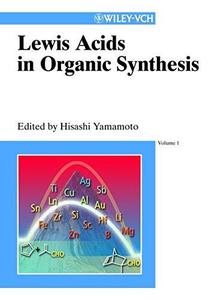 Lewis Acids in Organic Synthesis By 2000 | 1005 Pages | ISBN: 3527295798 | PDF | 25 MB The use of Lewis acids in organic synthesis, especially in catalysis is one of the most rapidly developing fields in synthetic organic chemistry. In addition, Lewis acid catalysis is one of the key technologies for asymmetric synthesis, and combinatorial chemistry as well as for large-scale production. Until now, pertinent information on these topics was scattered throughout the literature. Although review articles have appeared,it was difficult for the researcher to compare different methods based on Lewis acids. This two-volume handbook, edited and written by an outstanding team of experts in the field, fills this gap! This book is based on a classification according to metal centre of these electron-deficient compounds, allowing an in-depth treatment of the characteristics, benefits and limitations of each class of acid. Extensive cross-referencing and a comprehensive index enables readers to quickly find the solution to their synthesis problem. The chemical community will welcome this as a source of inspiration and invaluable reference for daily work. Content: Chapter 1 Introduction (pages 1-7): Hisashi YamamotoChapter 2 Li(I), Na(I), and K(I) Lewis Acids (pages 9-58): Susumu SaitoChapter 3 Mg(II) and Zn(II) Lewis Acids (pages 59-88): Yukihiro Motoyama and Hisao NishiyamaChapter 4 Achiral B(III) Lewis Acids (pages 89-133): Kazuaki IshiharaChapter 5 Chiral B(III) Lewis Acids (pages 135-190): Kazuaki IshiharaChapter 6 Achiral Al(III) Lewis Acids (pages 191-281): Takashi Ooi and Keiji MaruokaChapter 7 Chiral Aluminum Lewis Acids in Organic Synthesis (pages 283-354): William D. WulffChapter 8 Silicon(IV) Lewis Acids (pages 355-393): Masataka OishiChapter 9 Sn(II) and Sn(IV) Lewis Acids (pages 395-452): Kazuaki IshiharaChapter 10 Preparation and Addition Reactions of Allylic and Allenic Tin and Indium Reagents (pages 453-522): James A. MarshallChapter 11 Sb(III) and Sb(V) Lewis Acids (pages 523-541): Kazuaki IshiharaChapter 12 Copper Lewis Acids in Organic Synthesis (pages 543-574): Mukund P. Sibi and Gregory R. CookChapter 13 Ag(I), Au(I) Lewis Acids (pages 575-596): Akira YanagisawaChapter 14 Transition Metal Lewis Acids: From Vanadium to Platinum (pages 597-652): E. Peter Kundig and Christophe M. SaudanChapter 15 Titanium(IV) Lewis Acids (pages 653-798): Hirokazu Urabe and Fumie SatoChapter 16 Chiral Ti(IV) Lewis Acids (pages 799-847): Koichi Mikami and Masahiro TeradaChapter 17 Hf?Centered Lewis Acids in Organic Chemistry (pages 849-864): Keisuke Suzuki and Shigeo YamanoiChapter 18 Zirconium Lewis Acids (pages 865-881): Ryuichiro Hara and Tamotsu TakahashiChapter 19 Sc(III) Lewis Acids (pages 883-910): Shu KobayashiChapter 20 Lanthanide Lewis Acids Catalysis (pages 911-944): Masakatsu Shibasaki, Ken?Ichi Yamada and Naoki YoshikawaChapter 21 Polymer?Supported Metal Lewis Acids (pages 945-979): Shinichi Itsuno  Leukaemia Diagnosis, Third Edition By 2003 | 268 Pages | ISBN: 1405106611 | PDF | 9 MB Now in its third edition Leukaemia Diagnosis has been completely revised and updated throughout to include the latest developments in the fields of haematology and oncology. Written by Barbabra Bain, an acclaimed haematologist and morphologist, Leukaemia Diagnosis is a highly practical guide and reference source, which reflects the latest changes in the fields of morphology, cytochemistry, immunophenotyping, cytogenetics and molecular genetics.The third edition of Leukaemia Diagnosis includes:Over 180 superb four-colour photographs of normal cells and abnormal variantsThe latest WHO leukaemia classification guidelinesContent: Chapter 1 Acute Leukaemia: Cytology, Cytochemistry and the FAB Classification (pages 1-56): Chapter 2 Acute Leukaemia: Immunophenotypic, Cytogenetic and Molecular Genetic Analysis in the Classification of Acute Leukaemia ? The EGIL, MIC, MIC?M and WHO Classifications (pages 57-143): Chapter 3 Myelodysplastic Syndromes (pages 144-179): Chapter 4 Chronic Myeloid Leukaemias (pages 180-202): Chapter 5 Chronic Lymphoid Leukaemias (pages 203-254):  Alicia Kopfstein-Penk, "Leonard Bernstein and His Young People's Concerts" English | ISBN: 0810888491 | 2015 | 354 pages | AZW3 | 4 MB Leonard Bernstein touched millions of lives as composer, conductor, teacher, and activist. He frequently visited homes around the world through the medium of television, particularly through his fifty-three award-winning Young People's Concerts (1958-1972), which at their height were seen by nearly ten million in over forty countries. Originally designed for young viewers but equally attractive to eager adults, Bernstein's brilliance as a teacher shined brightly in his televised presentations. And yet, despite the light touch of the "maestro," the innocence of his audience, and the joyousness of each show's topic, the turbulence of the times would peek through.  Dominik Zaum, "Legitimating International Organization" English | 2013 | pages: 272 | ISBN: 0199672091 | PDF | 1,7 mb The legitimacy of international and regional organisations and their actions is frequently asserted and challenged by states and commentators alike. Their authorisations or conduct of military interventions, their structures of decision-making, and their involvement into what states deem to be domestic matters have all raised questions of legitimacy. As international organisations lack the coercive powers of states, legitimacy is also considered central to their ability to attain compliance with their decisions.  Legal Aspects of Occupational Therapy, Third Edition By Bridgit Dimond(auth.) 2010 | 673 Pages | ISBN: 1405196548 | PDF | 10 MB Since publication of the original edition in 1996, this book has established itself as an essential text for occupational therapists. It offers an understanding of the law relating to their practice, but is written to be accessible for those who have no prior legal knowledge. The text provides valuable information for occupational therapists employed in health and social services, as well as the law relevant to private practitioners. The book includes chapters on all the main client groups and presents the relevant specialist law. Students and teachers of occupational therapy will find the chapters on professional registration, education, training and research of particular interest. The third edition has been substantially revised to cover significant changes in legislation since the previous version. There is also a brand new chapter on the subject of death and dying. Legal Aspects of Occupational Therapy remains a key resource for the occupational therapy student, practitioner and service manager.Content: Chapter 1 Occupational Therapy (pages 1-12): Chapter 2 The Legal System (pages 13-23): Chapter 3 Registration and the Health Professions Council (pages 24-37): Chapter 4 Professional Conduct Proceedings (pages 38-54): Chapter 5 Education and Training (pages 55-65): Chapter 6 Rights of Clients (pages 66-82): Chapter 7 Consent and Information Giving (pages 83-97): Chapter 8 The Duty of Confidentiality and Data Protection (pages 98-122): Chapter 9 Access to Records and Information (pages 123-137): Chapter 10 Negligence (pages 138-166): Chapter 11 Health and Safety (pages 167-204): Chapter 12 Record Keeping (pages 205-218): Chapter 13 Statements, Reports and Giving Evidence in Court (pages 219-235): Chapter 14 Handling Complaints (pages 236-248): Chapter 15 Equipment and Medicinal Products (pages 249-278): Chapter 16 Transport Issues (pages 279-289): Chapter 17 Statutory Organisation of Health and Social Services (pages 290-313): Chapter 18 Community Care and the Rights of the Disabled (pages 314-347): Chapter 19 Employment Law (pages 348-378): Chapter 20 Physical Disabilities (pages 379-397): Chapter 21 Mental Disorder (pages 398-430): Chapter 22 Learning Disabilities (pages 431-453): Chapter 23 Care of Babies, Children and Young Persons (pages 454-489): Chapter 24 Older People (pages 490-519): Chapter 25 Death and the Dying (pages 520-549): Chapter 26 Teaching and Research (pages 550-575): Chapter 27 Complementary Medicine (pages 576-584): Chapter 28 Independent Practice (pages 585-597): Chapter 29 The Future (pages 598-603): 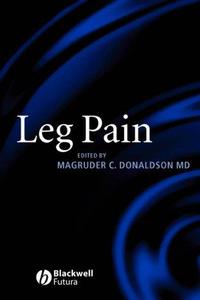 Leg Pain By Magruder C. Donaldson(auth.) 2004 | 154 Pages | ISBN: 1405116455 | PDF | 11 MB This small volume is devoted to one of the most common patient complaints encountered by practitioners of adult medicine, and one that frequently presents the initial examining physician with a diagnostic conundrum. Few internists, primary care physicians, emergency room physicians, or medical or surgical subspecialists are thoroughly familiar with the neurologic, orthopedic, immunologic, and vascular causes of leg pain, and help from the literature requires access to multiple texts from diverse medical and surgical specialties. Leg Pain brings together, in a compact and easily transportable volume, expertise from the fields of vascular surgery, neurology, orthopedics and rheumatology, to offer insights into the clinical signs and symptoms associated with leg pain of diverse origins. · Emphasizes distinguishing features of the various types of leg pain, most of which can be determined by a simple history and physical examination.· Much important data are presented in tabular form to aid in arriving at a correct diagnosis. · Contains practical illustrations including a large section showcasing normal anatomy of the lower extremity.Content: Chapter 1 Overview (pages 1-2): Magruder C. DonaldsonChapter 2 Pathophysiology of Leg Pain (pages 3-13): Srdjan S. NedeljkovicChapter 3 The Initial Encounter (pages 3-20): Magruder C. DonaldsonChapter 4 Mechanical Leg Pain (pages 21-48): Tamara L. Martin and Scott D. MartinChapter 5 Inflammatory Leg Pain (pages 49-67): Sang Cheol Bae and Matthew H. LiangChapter 6 Vascular Leg Pain (pages 68-86): Magruder C. DonaldsonChapter 7 Neuropathic Leg Pain (pages 87-108): David C. PrestonChapter 8 Other Leg Pain (pages 109-113): Magruder C. Donaldson 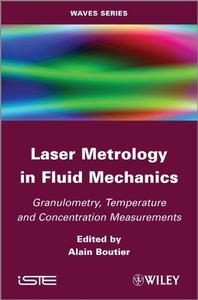 Laser Metrology in Fluid Mechanics By 2012 | 337 Pages | ISBN: 1848213980 | PDF | 6 MB In fluid mechanics, non-intrusive measurements are fundamental in order to improve knowledge of the behavior and main physical phenomena of flows in order to further validate codes.The principles and characteristics of the different techniques available in laser metrology are described in detail in this book.Velocity, temperature and concentration measurements by spectroscopic techniques based on light scattered by molecules are achieved by different techniques: laser-induced fluorescence, coherent anti-Stokes Raman scattering using lasers and parametric sources, and absorption spectroscopy by tunable laser diodes, which are generally better suited for high velocity flows. The size determination of particles by optical means, a technique mainly applied in two-phase flows, is the subject of another chapter, along with a description of the principles of light scattering.For each technique the basic principles are given, as well as optical devices and data processing. A final chapter reminds the reader of the main safety precautions to be taken when using powerful lasers.Content: Chapter 1 Basics on Light Scattering by Particles (pages 1-66): Fabrice Onofri and Severine BarbosaChapter 2 Optical Particle Characterization (pages 67-158): Fabrice Onofri and Severine BarbosaChapter 3 Laser?Induced Fluorescence (pages 159-222): Fabrice Lemoine and Frederic GrischChapter 4 Diode Laser Absorption Spectroscopy Techniques (pages 223-270): Ajmal MohamedChapter 5 Nonlinear Optical Sources and Techniques for Optical Diagnostic (pages 271-306): Michel LefebvreChapter 6 Laser Safety (pages 307-320): Jean?Michel Most
 Laravel 9.x | PHP Learning Laravel with Easiest Way: The book will teach you Laravel 9.x step by step. by Andy Turner English | July 4, 2022 | ISBN: N/A | ASIN: B0B5VRGQCP | 167 pages | EPUB | 2.17 Mb Best Laravel Books for All Time With Update Version: |